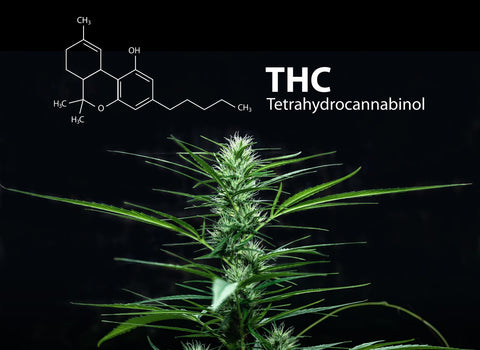
Upset stomachs are a common occurrence, whether it's from motion sickness, migraines, viruses, or simply something you ate. Before you reach for an over-the-counter antiemetic, you may want to consider a natural remedy that's been used to soothe the stomach for centuries: cannabis.
Research shows that very small, controlled doses of cannabis can provide relief from nausea without any side effects.
THC and CBD can help control nausea and vomiting by interacting with receptors in the brain and gut. They seem to form an “entourage effect”, a synergistic interaction where compounds work together to combat nausea more efficiently than they do alone.
Our Delta 9 edibles contain balanced ratios of both cannabinoids, allowing you to experience the powerful entourage effect and safely relieve nausea.
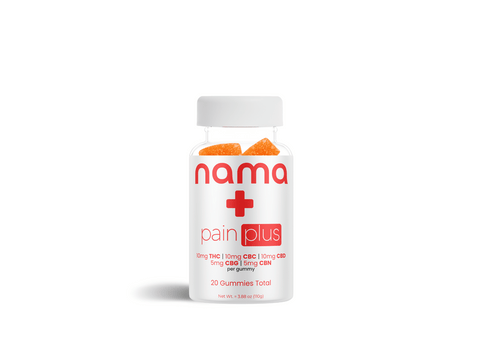

THC: 10 mg | CBC: 10 mg | CBD: 10 mg | CBG: 5 mg | CBN 5mg
We have a lot of ground to cover here, so let’s peek behind this well-oiled antiemetic machine.
What happens in your body that triggers nausea and vomiting?
Nausea and vomiting are complex physiological responses triggered by many different factors. They serve as protective mechanisms for the body to clear toxins, maintain homeostasis, and prevent the introduction of threats during vulnerable periods.
Nausea is that queasy feeling in your stomach—the sensation that something isn't quite right. It often precedes vomiting but can also occur on its own, causing significant discomfort.
The act of vomiting is a complex reflex that is controlled by the brain and triggered in the stomach and intestines. Though often involuntary and always uncomfortable, vomiting serves a crucial role in protecting the stomach and the body from harmful substances.
Since they have a vital role to play in the body’s defense mechanisms, nausea and vomiting are orchestrated through a complex interplay between the brain and the gastrointestinal tract. Nausea is triggered in the central nervous system, while vomiting originates from the peripheral nervous system's regulation of the digestive organs.
What is the brain’s role in nausea?
When you’re feeling sick to your stomach, it’s a signal from the gastrointestinal tract that something is amiss. However, the brain plays a central role in perceiving and responding to nausea.
The brain receives signals from multiple sources, including the gastrointestinal tract, the inner ear (responsible for balance and motion sensing), and emotional centers. These signals converge in specific brain regions, notably the chemoreceptor trigger zone (CTZ) and the vomiting center in the brainstem.
- The chemoreceptor trigger zone is highly sensitive to substances like toxins, drugs, and chemicals. When stimulated, the CTZ sends signals to the vomiting center.
- The vomiting center coordinates the nausea-to-vomiting transition. When necessary, it activates abdominal muscles, the diaphragm, and sphincters to initiate vomiting.
Apart from the CTZ and the vomiting center, important brain chemicals called neurotransmitters play vital roles in the development of and relief from nausea and vomiting.
There are five key neurotransmitters involved in afferent feedback to these areas. These are histamine (H1 receptors), dopamine (D2), serotonin (5-HT3), acetyl choline (muscarinic) and neurokinin (substance P). (Denholm and Gallagher)
These neurotransmitters transmit signals within the nervous system that influence the brain's perception of nausea and the coordination of the vomiting reflex.
- Serotonin is a neurotransmitter that plays a part in nausea and vomiting. It is released from specialized cells in the gastrointestinal tract when it detects irritants or toxins. This release activates receptors in the gut, stimulating the vagus nerve, which sends signals to the vomiting center in the brain. Medications that target serotonin receptors are often used to prevent and treat nausea and vomiting, particularly in chemotherapy-induced vomiting and postoperative nausea.
- Dopamine is implicated in nausea and vomiting, particularly in the context of chemotherapy-induced nausea and vomiting (CINV). Chemotherapy treatment drugs stimulate dopamine receptors in the brain, leading to nausea. Medications known as dopamine receptor antagonists block dopamine receptors and help alleviate the symptoms of chronic nausea and vomiting.
- Histamine is a neurotransmitter and inflammatory mediator. Histamine receptors in the brain can trigger the vomiting reflex when stimulated by things like certain drugs and toxins. Antihistamine medications that block histamine receptors are often used to manage motion sickness and nausea.
- Acetylcholine plays a role in gastrointestinal motility and regulation. Medications that block acetylcholine receptors are used to manage motion sickness by reducing the activity of the cholinergic system in the inner ear and brainstem.
- Substance P is a neuropeptide that acts as a neurotransmitter in the brain. Drugs targeting substance P are used in combination with other antiemetics to manage chemotherapy-induced nausea and vomiting.
- GABA (gamma-aminobutyric acid) and endorphins are a few more neurotransmitters that can influence the brain's response to nausea and stress. The body's stress response, which involves the release of stress hormones like cortisol, can exacerbate nausea.
What role does the GI tract play in vomiting?
Vomiting is the forceful expulsion of stomach contents through the mouth. It is a protective reflex designed to remove potentially harmful substances or irritants from the body. It can be triggered by severe nausea, but it can also occur without prior warning.
The gastrointestinal tract is both the source of irritation and the origin of the material to be expelled during vomiting. Two important things happen right before you throw up the contents of your stomach:
- Irritation of the stomach lining can occur due to infections, toxins, overeating, or the ingestion of substances that the body deems harmful. This irritation prompts the stomach to send signals to the brain, signaling that something needs to leave the body.
- Once the brain receives signals indicating the need for expulsion, it coordinates muscle contractions. The abdominal muscles contract forcefully, increasing abdominal pressure. Simultaneously, the diaphragm contracts, further aiding the expulsion process. Sphincters, such as the lower esophageal sphincter and upper esophageal sphincter, relax to allow the stomach contents to move upward.
This intricate interplay between the brain and gut serves as a protective mechanism to maintain the body's well-being and health.
What causes nausea and vomiting?
Many things can trigger nausea and vomiting.
- Gastrointestinal disorders: conditions like gastritis, gastroenteritis, food poisoning, or peptic ulcers can irritate the stomach lining, leading to nausea and vomiting.
- Infections: viral or bacterial infections can cause nausea and vomiting as the body's defense mechanism.
- Motion sickness: when the brain receives conflicting signals about motion from the inner ear and eyes, it can lead to motion sickness.
- Chemotherapy and radiation: these cancer treatments often induce nausea and vomiting due to their effects on the digestive system.
- Pregnancy: hormonal changes during pregnancy can cause morning sickness, a common form of nausea and vomiting.
- Medications: certain drugs, including opioids and chemotherapy agents, can trigger nausea and vomiting as side effects.
- Psychological factors: stress, anxiety, and certain mental health conditions can lead to functional nausea and vomiting.
- Overeating or indigestion: consuming excessive amounts of food or foods that are difficult to digest can cause nausea and vomiting.
- Systemic illness: conditions like diabetic ketoacidosis, kidney or liver disease, and high intracranial pressure can induce nausea and vomiting as symptoms.
How are nausea and vomiting treated?
Depending on the underlying causes that trigger nausea and vomiting, these conditions can be treated through medication, diet, and lifestyle changes. Antiemetic drugs are frequently used to block serotonin, histamine, and dopamine receptors and suppress the urge to vomit.
While these treatments for nausea are effective, they also come with side effects. This has led many people to turn to alternative nausea remedies over the years. One natural option that is garnering increased research is the use of cannabis.
Marijuana has been used for centuries as a treatment of nausea and increased appetite. Cannabinoids like Delta 9, CBD, CBN, and Delta 8 THC show promising results in treating the symptoms of nausea and vomiting.
But how exactly does the cannabis plant provide relief for upset stomachs?
Is cannabis really antiemetic?
It all comes down to the plant’s active compounds, Delta-9-tetrahydrocannabinol (Delta 9 THC) and cannabidiol (CBD). They interact with the body’s endocannabinoid system (ECS), a network of receptors that help regulate important bodily functions. THC and CBD can suppress the triggers for nausea and vomiting through the ECS by modulating key neurotransmitters involved in the vomiting reflex.
There’s so much more to it. Let’s start from the beginning and explain the science behind the ability of cannabis to ease nausea and settle uneasy tummies.
How do THC and CBD interact with the ECS to alleviate nausea?
The human body has an endocannabinoid system which consists of receptors, endocannabinoids, and enzymes. The ECS plays a crucial role in regulating physiological processes such as appetite, pain perception, mood, and nausea.
In animal models, researchers found a site where cannabinoids act to reduce vomiting. It’s in a part of the brainstem called the dorsal vagal complex (DVC). The DVC receives input from multiple sources associated with nausea and vomiting, including the chemoreceptor trigger zone, vagus nerve, and vestibular system.
Within the DVC is an area known as the dorsal motor nucleus of the vagus (DMV), which communicates directly with the stomach and intestines via the vagus nerve. When activated, the DMV triggers vomiting by sending signals to initiate muscular contractions and reverse peristalsis.
THC and synthetic THC agonists can suppress vomiting behavior in animals by binding to CB1 receptors concentrated in the DMV region of the DVC.
THC’s interaction with CB1 receptors produces antiemetic effects
THC is the psychoactive compound in cannabis. This means that, at sufficient amounts, it can cause a “high,” which manifests in feelings of happiness, sensory distortion, increased appetite, and anxiety or paranoia. The main reason this happens is the way THC interacts with CB1 receptors.
CB1 receptors are found throughout the brain, including in areas that regulate nausea and vomiting, such as the CTZ and the vomiting center in the brainstem. A small amount of CB1 receptors are located in the digestive tract and guess what: THC activates all of them.
This is believed to ease nausea by:
- Suppressing serotonin signaling from enterochromaffin cells (the most abundant subtype of intestinal enteroendocrine cells in the colon) to reduce vomiting trigger signals sent to the brain.
- Inhibiting the vomiting center in the medulla oblongata so it is less sensitive to nausea triggers.
- Lowering activation of dopamine receptors associated with nausea signaling in the chemoreceptor trigger zone.
Through its interaction with CB1 receptors, Delta 9 THC regulates levels of serotonin and increases dopamine.
Our Energy gummies might be the perfect microdosing product to increase serotonin, boost energy, and treat nausea. They could come in handy when your upset stomach is acting out and you need something mild and juicy to appease the gods of queasiness.
How does cannabis regulate neurotransmitters?
The antiemetic effects of cannabis are largely due to its ability to regulate key neurotransmitters involved in nausea and vomiting signaling pathways. We’ve seen how THC and CBD interact with the endocannabinoid system to modulate neurotransmitters like serotonin and dopamine. Remember the enterochromaffin cells?
A 2004 study found that “since the [CB1] receptor is present on enterochromaffin-like cells in the stomach, activation of CB1R could also reduce endogenous histamine release and thereby reduce acid secretion.” This is an essential factor in treating nausea and vomiting because excess stomach acid can irritate the gastrointestinal lining and stimulate nausea signaling pathways. So by decreasing histamine-mediated acid secretion, CB1 receptor activation helps reduce a potential trigger for nausea and vomiting.
THC can reduce dopamine signaling by acting on CB1 receptors in the chemoreceptor trigger zone of the brainstem. Dopamine is one of the main neurotransmitters that communicates nausea signals to the vomiting center, so this blocking action makes the brain less sensitive to nausea stimuli.
Interestingly, THC also has the ability to increase dopamine levels. This is particularly important for people who suffer from depression, as low dopamine hurts mental health. THC can both increase and decrease dopamine signaling through its actions on CB1 receptors located on different types of neurons.
- In the reward pathway (mesolimbic system), Delta 9 THC activates CB1 receptors on inhibitory GABA neurons. This reduces the inhibition of dopamine neurons, leading to increased dopamine release and euphoric effects.
- But in the vomit-controlling pathway, THC activates CB1 receptors directly on these dopamine-releasing neurons. This inhibits or reduces their dopamine secretion, making the vomiting center less sensitive.
The difference lies in which specific dopamine pathway is being regulated. For nausea control, THC blunts dopamine signaling to the trigger zone to suppress vomiting signals. But for psychoactive effects, THC amplifies dopamine in the reward system.
Unlike THC, CBD does not directly bind to CB1 receptors nor does it produce the “high” commonly associated with smoking weed. Even in higher doses, cannabidiol has no psychoactive effects. What CBD does is enhance signaling of the body's endocannabinoids like anandamide which activate both CB1 and CB2 receptors.
The anti-nausea/anti-emetic effects of CBD may be mediated by indirect activation of somatodendritic 5-HT1A receptors in the dorsal raphe nucleus; activation of these autoreceptors reduces the release of 5-HT in terminal forebrain regions. (Parker, et. al.)
Apart from activating 5-HT1A serotonin receptors, CBD can also reduce nausea and vomiting by modulating the release of GI hormones like ghrelin and motilin associated with nausea signaling and reducing inflammation in the gastrointestinal tract that can trigger nausea.
Product QUIZ
Need help deciding what product is best for you? Take our quiz, just three questions until your perfect match!
The potent anti-inflammatory properties of cannabis
Cannabis’s anti-inflammatory properties may be another mechanism for alleviating nausea and suppressing vomiting.
Inflammation in the gastrointestinal tract can directly stimulate nausea and vomiting reflexes. The release of inflammatory cytokines like TNF-alpha and interleukins can over-sensitize the vagus nerve, triggering more frequent nausea signaling to the brain. Inflammation also disrupts the gastric mucosa lining, making it more permeable to toxins, pathogens, and enzymes that can further irritate the stomach.
Studies indicate that THC and CBD can suppress cytokine and interleukin release while also modulating inflammation at a cellular level. Specifically in the gut, CBD has been found to reduce gastric inflammation in animal models by inhibiting inflammatory cytokines. THC may provide anti-inflammatory effects by maintaining the integrity of the gastric lining against irritants.
Cannabis and/or cannabinoids protect the gastric mucosa against noxious challenge with non-steroidal anti-inflammatory drugs, ethanol as well as against stress-induced mucosal damage. Cannabis/cannabinoids might protect the gastric mucosa by virtue of its antisecretory, antioxidant, anti-inflammatory, and vasodilator properties. (Abdel-Salam)
By mitigating inflammation in the digestive tract, the endocannabinoid system activated by cannabis can help restore normal gut-brain signaling and sensation. This provides a soothing effect on irritation and queasiness.
Cannabis helps reduce anxiety
You may already know this, but stress and anxiety are strongly linked to your gut. During times of stress, the brain releases corticotropin-releasing hormone (CRH) which directly disrupts gut function and motility. Stress can also increase stomach acid production and visceral hypersensitivity.
Cannabis has demonstrated the ability to reduce anxiety and quell stress responses through the endocannabinoid system. Studies show CBD in particular can lower CRH levels and normalize gastric acid secretion stalled by stress.
Similarly to THC, CBD interacts with and regulates serotonin receptors. Serotonin levels are reduced in people with mental illnesses like depression, bipolar disorder, and anxiety. It seems that CBD can modulate serotonin levels through cannabinoid receptors, elevating mood and reducing symptoms of anxiety and depression.
…existing preclinical evidence strongly supports CBD as a treatment for generalized anxiety disorder, panic disorder, social anxiety disorder, obsessive–compulsive disorder, and post-traumatic stress disorder when administered acutely. (Blessing, et. al.)
This anti-anxiety effect can then provide downstream benefits for gastrointestinal issues like nausea which are often triggered or exacerbated by stress and anxiety. A 2019 study found that 80% of participants treated with CBD for anxiety experienced improvement within the first month.
By reducing systemic stress and anxiety, cannabis can help prevent the downstream effects on the gastrointestinal system that lead to common symptoms like nausea, cramping, and loss of appetite.
You probably know all about the munchies—the surge in appetite many people experience after consuming cannabis. Read more about how THC and CBD stimulate appetite and help restore enjoyment of food after nausea or chemotherapy.
How does cannabis alleviate chemotherapy-induced nausea?
Chemotherapy and other cancer treatments are frequently associated with distressing side effects that can have a substantial negative impact on a patient's quality of life. For years, many cancer patients have been using cannabis to help alleviate a wide range of chemotherapy-related side effects, including nausea and vomiting.
A 2022 review study of cannabis in palliative care suggested that “positive treatment effects have been reported for some medical cannabis products in the palliative care setting,” but that further evidence is needed to support its use in clinical practice.
Positive treatment effects (statistical significance with P < 0.05) were seen for some [cannabis] products in pain, nausea and vomiting, appetite, sleep, fatigue, chemosensory perception and paraneoplastic night sweats in patients with cancer…
A THC-based synthetic drug called dronabinol is often prescribed to cancer patients. Dronabinol interacts with the ECS to stimulate the brain’s areas responsible for hunger and the control of nausea and vomiting. The US Food and Drug Administration approved this THC oral medication back in 1985 to treat instances of anorexia nervosa, nausea, and weight loss in AIDS and cancer patients.
More studies agree that cannabis could be the life-saving tool for many cancer patients who experience violent nausea and vomiting after receiving chemotherapy: “the cannabinoids tested in these trials may be useful as mood-enhancing adjuvants for controlling chemotherapy related sickness.”
A randomized, placebo-controlled trial found that “the addition of oral THC:CBD to standard antiemetics was associated with less nausea and vomiting but additional side-effects” Thirty-one percent of them experienced cannabinoid-related adverse effects such as sedation, dizziness, or disorientation, but 83% of participants preferred cannabis to placebo.
These side effects of cannabis stem from the higher doses administered to participants in the trial. Lower amounts of CBD and THC, especially when taken together at balanced ratios, cause no unpleasant side effects. By precisely tailoring your dosage down to 2–10 mg of the psychoactive THC, you can minimize risks like impairment, anxiety, and rapid heart rate while still gaining relief from nausea, chronic pain, inflammation, and more.
That’s why none of our gummies contain more than ten milligrams of THC.
Speaking of low doses, have you heard of our THC drinks? While gummies offer convenience and quick ingestion, THC-infused beverages may be a more sophisticated, yet equally safe way of taking small amounts of your favorite cannabinoids.
With our liquid Buzz drops, you can infuse any non-alcoholic drink and experience the blissful waves of relief from nausea without worrying about dosing or cannabis taste. See our guide on how to infuse your favorite drinks with weed.
Why is microdosing better for nausea?
Microdosing cannabis is a far better option for treating nausea compared to higher doses, and we’re about to explain why.
- Microdosing allows for more precise dosing where you can carefully tailor relief to your symptoms without going overboard. You can find the lowest effective dose to adequately control nausea.
- Low amounts of THC avoid intense psychoactive effects. This means no disorientation, anxiety, or dizziness that can worsen your nausea. The clear-headed effect of microdoses allows you to go about your day.
- Microdoses enable gradual acclimation to cannabis effects so side effects like tachycardia are less likely to occur. This helps you build up and improve your tolerance.
- Remember the entourage effect? This synergy of balanced THC and CBD ratios is enhanced at lower doses. If you consume more THC, you need more CBD to balance out its effects, and that leads back to overconsumption and the possibility of adverse reactions. If you’re struggling with nausea, you can’t benefit from overconsumption.
- Consistent microdosing can desensitize nausea signaling pathways without constantly activating them like higher doses. When signaling pathways involved in nausea are activated all the time, some people can develop a condition called cannabis hyperemesis syndrome (CHS).
- Microdosing avoids overstimulating the endocannabinoid system which can lead to dependence, tolerance build-up, and loss of efficacy.
- For chemotherapy patients, microdosing ensures cannabis relief doesn't interfere with delicate treatment protocols.
Together, THC and CBD can offer a one-two punch against nausea, especially when combined through the entourage effect.
The beneficial effects of each cannabinoid become more pronounced when you take them together. Luckily, our full-spectrum CBD gummies contain effective combos of THC, CBD, and other cannabis extracts that enhance each other’s benefits. Check out our detailed comparison of THC and CBD to learn more about their similarities and differences.
With our Relax Plus gummies, you don’t have to choose between CBD and THC—you get the ultimate entourage effect. Thanks to 25 mg of CBD, these cannabis edibles are fast at lifting the mood and enhancing relaxation.
The “plus” in their name is for 5 mg of Delta which will produce a mild buzz without making you feel “heavy” and sedated.
Can too much cannabis trigger nausea?
Despite the plethora of therapeutic and medicinal benefits, too much cannabis can sometimes have the unintuitive effect of worsening nausea instead of relieving it. This phenomenon is known as cannabis hyperemesis syndrome.
CHS is a condition characterized by recurrent bouts of severe nausea, severe vomiting, and abdominal pain in people who use cannabis heavily for months and years. In the very essence of CHS lies the overstimulation of the endocannabinoid system.
CHS has been characterized as a downregulation of the CB1 receptor and endocannabinoid system (ECS), the basic homeostatic regulator of vertebrate physiology, as a result of chronic THC exposure. (Russo, et. al.)
Parisetti, et. al. explain that not only chronic exposure to THC but, in the majority of cases, chronic exposure to excessive THC levels often leads to cannabinoid hyperemesis syndrome.
THC in higher amounts can cause intoxication, resulting in paradoxical pro-emetic characteristics. THC is stored in fat cells in the body. Stress and food-deprivation stimulate the sympathetic nervous system, which increases lipolysis to meet body demands mediated by the action of adrenocorticotropic hormone (ACTH) on adipocyte receptors. Increased ACTH enhances the release of THC stored in adipocytes, leading to emesis. Therefore, higher THC levels (after heavy ingestion of cannabis with highly potent THC) can explain its pro-emetic activity.
According to research, CBD and CBG may play a protective role against CHS.
Cannabidiol (CBD) and cannabigerol (CBG) are two additional cannabinoids found in cannabis that appear to modulate the anti-emetic properties of THC. Cannabidiol, in contrast to THC, is non-psychotropic, has a low affinity for CB1 and CB2 receptors, and acts as a partial agonist at the 5-HT1A receptor. CBD enhances the expression of CB1 receptors in the hypothalamus and amplifies the hypothermic effects caused by THC. In animals the effect of CBD on toxin-induced vomiting displays a biphasic response with low doses producing an antiemetic effect whereas higher doses enhance vomiting.
CHS usually resolves within days of abstaining from cannabis use. However, a far better solution is to stay away from high amounts of cannabis altogether.
You do that by consuming smaller amounts of CBD and, more importantly, THC. Our low-THC Energy gummies contain only 2.5 mg of Delta 9. These fruity bites will produce a mild high, perfect for uplifting your mood without the fear of causing CHS or experiencing any other unwanted reaction.
What other cannabinoids help with nausea?
While THC and CBD are the most thoroughly researched, the entourage effect points to other cannabis compounds that could be used as complementary antiemetic therapy.
- CBG blocks serotonin release like THC does to control nausea. It may be especially helpful for motion sickness.
- Cannabichromene (CBC) boosts the antiemetic effects of THC and CBD for chemotherapy-related nausea and may reduce intestinal inflammation.
- Tetrahydrocannabivarin (THCV) activates CB1 receptors similarly to THC. While animal studies show it reduces nausea behaviors, human data is still limited.
- Cannabinol (CBN) is a decomposition product of THC. Some studies suggest CBN may prevent nausea and vomiting, stimulate appetite, and lower inflammation.
We infuse our gummies with only the best cannabis compounds. Check out our collection of low-dose CBN gummies that unlock the potential of CBN's anti-nausea properties in a delicious edible form.
Is it legal to consume THC and CBD?
No need to worry: microdosing cannabis is federally legal in the U.S.
Delta 9 is legal on a federal level. Under the 2018 Farm Bill, Delta 9 must be derived from hemp, and the THC content cannot exceed 0.3% by dry weight.
However, the legality of hemp-derived products is determined by each state individually. For example, Delta 8 THC is legal on a federal level, which also makes our Delta 8 products federally legal. However, several US states still ban Delta 8 outright.
All our Delta 9 THC edibles are legal in compliance with the Farm Bill. To make sure they are legal in your state, read up on our state-by-state guide to Delta 9 legality.
Cannabis and nausea FAQ
Both THC and CBD have shown potential in reducing nausea, but they may work in different ways. THC is often more directly associated with anti-nausea effects. It binds to CB1 receptors in the brain, modulating the brain's response to nausea-inducing stimuli.
CBD, on the other hand, has more indirect effects. While it doesn't directly bind to CB1 receptors, it can influence the endocannabinoid system's overall balance, potentially reducing inflammation and anxiety, which can contribute to nausea.
Indica strains of THC are often preferred for nausea relief. Indica strains tend to have a more relaxing, sedative effect and may help alleviate both nausea and anxiety. Sativa strains may be more uplifting and stimulating, which may not be as effective in reducing nausea.
The best way to microdose cannabis is with our low-dose edibles. They are made with low doses of THC and CBD, consistently measured out in 2–10 mg microdoses. This gives you accurate, incremental control over your cannabis intake compared to inhaled methods.
With our wide variety of edible options dosed at different THC and CBD ratios, you can easily fine-tune your microdose and cannabinoid profile to suit your needs. Plus, the tasty flavors make consuming cannabis pleasant.
Some people prefer tinctures or vaporizing, but they don’t offer precise control over the dosage.
Whichever way you microdose medicinal cannabis, start with a very low dose and gradually increase it until you find the right level for symptom relief without unwanted side effects.
CBD is generally well-tolerated, but in rare cases, it may cause mild side effects such as nausea or digestive issues. This is more likely to occur at high doses. If CBD does cause nausea, reducing the dosage or trying a different product may alleviate this side effect.
While CBD is generally considered safe, certain individuals should exercise caution or avoid it, including:
- Pregnant or breastfeeding women (as the effects on the developing fetus or infant are not well-studied).
- People who take medications that interact with CBD, such as blood thinners.
- Those with liver conditions (CBD may affect liver enzymes).
- Individuals with a history of adverse reactions to cannabinoids.
You may feel bad after consuming cannabis products rich in CBD because of:
- The dosage. Taking too high a dose can lead to side effects, including nausea or dizziness.
- The quality of the product. Poor-quality CBD products may contain contaminants or inaccurate dosages.
- Individual sensitivity. Some people may be more sensitive to CBD, leading to adverse effects.
- Interaction with medications. CBD can interact with certain medications, leading to unexpected effects.
If you experience negative effects after taking CBD, consult with your healthcare provider and consider adjusting the dosage or product type.
Top Sellers
New? Start with our Ultimate Sampler!

THC: 10 mg | CBC: 10 mg | CBD: 10 mg | CBG: 5 mg | CBN 5mg
Resources
Denholm, L., & Gallagher, G. (2018, September 1). Physiology and pharmacology of nausea and vomiting. Anaesthesia & Intensive Care Medicine; Elsevier BV. https://doi.org/10.1016/j.mpaic.2018.06.010
Parker, L. A., Rock, E. M., & Limebeer, C. L. (2011, July 12). Regulation of nausea and vomiting by cannabinoids. British Journal of Pharmacology; Wiley-Blackwell. https://doi.org/10.1111/j.1476-5381.2010.01176.x
Hornby, P. J., & Prouty, S. M. (2004, April 1). Involvement of cannabinoid receptors in gut motility and visceral perception. British Journal of Pharmacology; Wiley-Blackwell. https://doi.org/10.1038/sj.bjp.0705783
Parker, L. A., Rock, E. M., & Limebeer, C. L. (2011, July 12). Regulation of nausea and vomiting by cannabinoids. British Journal of Pharmacology; Wiley-Blackwell. https://doi.org/10.1111/j.1476-5381.2010.01176.x
Abdel-Salam, O. M. (2016, May 1). Gastric acid inhibitory and gastric protective effects of Cannabis and cannabinoids. Asian Pacific Journal of Tropical Medicine; Elsevier BV. https://doi.org/10.1016/j.apjtm.2016.04.021
Lookfong, N. A., Raup‐Konsavage, W. M., & Silberman, Y. (2022, November 21). Potential Utility of Cannabidiol in Stress-Related Disorders. Cannabis and Cannabinoid Research; Mary Ann Liebert, Inc. https://doi.org/10.1089/can.2022.0130
Blessing, E., Steenkamp, M. M., Manzanares, J., & Marmar, C. R. (2015, September 4). Cannabidiol as a Potential Treatment for Anxiety Disorders. Neurotherapeutics; Springer Science+Business Media. https://doi.org/10.1007/s13311-015-0387-1
Shannon, S., Lewis, N., Lee, H., & Hughes, S. (2019, March 1). Cannabidiol in Anxiety and Sleep: A Large Case Series. The Permanente Journal; The Permanente Press. https://doi.org/10.7812/tpp/18-041
Doppen, M., Kung, S., Maijers, I., John, M., Dunphy, H., Townsley, H., Eathorne, A., Semprini, A., & Braithwaite, I. (2022, November 1). Cannabis in Palliative Care: A Systematic Review of Current Evidence. Journal of Pain and Symptom Management; Elsevier BV. https://doi.org/10.1016/j.jpainsymman.2022.06.002
Badowski, M. E., & Yanful, P. K. (2018, April 1). Dronabinol oral solution in the management of anorexia and weight loss in AIDS and cancer. Therapeutics and Clinical Risk Management; Dove Medical Press. https://doi.org/10.2147/tcrm.s126849
Tramèr, M. R., Carroll, D., Campbell, F., Reynolds, D. J., Moore, R. A., & McQuay, H. J. (2001, July 7). Cannabinoids for control of chemotherapy induced nausea and vomiting: quantitative systematic. BMJ; BMJ. https://doi.org/10.1136/bmj.323.7303.16
Grimison, P., Mersiades, A., Kirby, A., Lintzeris, N., Morton, R. L., Haber, P., Olver, I., Walsh, A., McGregor, I. S., Cheung, Y., Tognela, A., Hahn, C., Briscoe, K., Aghmesheh, M., Fox, P., Abdi, E., Clarke, S., Della‐Fiorentina, S., Shannon, J., . . . Stockler, M. R. (2020, November 1). Oral THC:CBD cannabis extract for refractory chemotherapy-induced nausea and vomiting: a randomised, placebo-controlled, phase II crossover trial. Annals of Oncology; Elsevier BV. https://doi.org/10.1016/j.annonc.2020.07.020
Russo, E. B., Spooner, C., May, L., Leslie, R., & Whiteley, V. L. (2022, June 1). Cannabinoid Hyperemesis Syndrome Survey and Genomic Investigation. Cannabis and Cannabinoid Research; Mary Ann Liebert, Inc. https://doi.org/10.1089/can.2021.0046
Perisetti, A., Gajendran, M., Dasari, C. S., Bansal, P., Aziz, M., Inamdar, S., Tharian, B., & Goyal, H. (2020, January 1). Cannabis hyperemesis syndrome: an update on the pathophysiology and management. Annals of Gastroenterology; Hellenic Society of Gastroenterology. https://doi.org/10.20524/aog.2020.0528
Galli, J., Sawaya, R. A., & Friedenberg, F. K. (2011, December 1). Cannabinoid Hyperemesis Syndrome. Current Drug Abuse Reviews; Bentham Science Publishers. https://doi.org/10.2174/1874473711104040241
nama CBD FDA & legal disclaimer
Our products are not intended as medical advice, diagnosis, or treatment of any disease. They are not a replacement for prescription medications and have not been evaluated by the Food and Drug Administration (FDA).
The information provided on this website does not and is not intended to, constitute legal advice or any statements of the status of any laws. Any information, content, and materials available on this site are for general informational purposes only and are not intended to be relied upon for any purpose.
Readers of this website should contact their attorney to obtain advice with respect to any particular legal matter including decisions on what products are, or are not, legal to sell, possess, or consume. No reader, user, or browser of this site should act or refrain from acting on the basis of information on this site without first seeking legal advice from their own counsel in the relevant jurisdiction.
Only your individual attorney can provide assurances that the information contained herein – and your interpretation of it – is applicable or accurate for your particular situation. Use of, and access to, this website or any of the links or resources contained within the site do not create an attorney-client relationship between the reader, user, or browser, and website authors, contributors, contributing law firms, or committee members and their respective employers.
About
Learn
Join us on this journey

© Copyright 2026 nama Products LLC. All Rights Reserved.
†These statements have not been evaluated by the Food and Drug Administration. These products are not intended to diagnose, treat, cure or prevent any disease. All information presented here is not meant as a substitute for or alternative to information from health care practitioners. Please consult your health care professional about potential interactions or other possible complications before using any product.
††The information provided on this website does not, and is not intended to, constitute legal advice or any statements of the status of any laws. Any information, content, and materials available on this site are for general entertainment purposes only, and are not intended to be relied upon for any purpose.

By clicking ‘Yes,’ you agree to our
Terms & Conditions and Privacy Policy
123 John Doe Street
Your Town, YT 12345
Store Hours
Sun: Closed
Mon-Fri: 9:00 - 17:00
Sat: 10:00 - 13:00
What to expect at pickup
Closed
Closing at 5pm
Closing at 5pm
Closing at 5pm
Closing at 5pm
Closing at 5pm
Closing at 1pm



![Euphoria Kiwi Raspberry [10ct]](http://www.namacbd.com/cdn/shop/files/nama_kiwi_raspberry_pouch.png?v=1715285056&width=480)
![Euphoria Kiwi Raspberry [10ct]](http://www.namacbd.com/cdn/shop/files/nama_euphoria_kiwiraspberry_nutrition_facts.jpg?v=1715873960&width=480)
![Euphoria Triple Berry [10ct]](http://www.namacbd.com/cdn/shop/files/nama_euphoria_triple_berry_pouch.png?v=1715286095&width=480)
![Euphoria Triple Berry [10ct]](http://www.namacbd.com/cdn/shop/files/nama_euphoria_tripleberry_nutrition_facts.jpg?v=1715873950&width=480)
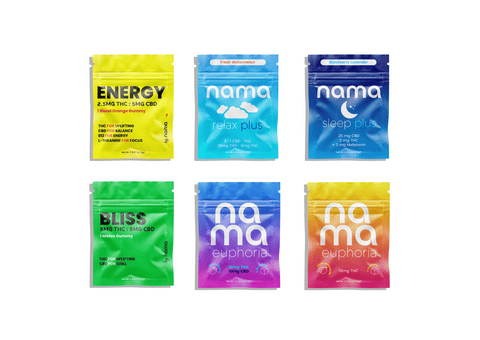
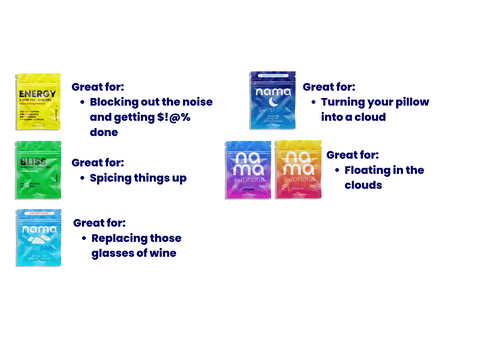
![Buzz Drops™ [THC Drink Drops]](http://www.namacbd.com/cdn/shop/files/nama_thc_buzz_drops.png?v=1711412866&width=480)
![Buzz Drops™ [THC Drink Drops]](http://www.namacbd.com/cdn/shop/files/buzz-drop-wine-comparison.png?v=1736882023&width=480)
![Buzz Packs™ [THC and CBD Powder Drink Mix]](http://www.namacbd.com/cdn/shop/files/nama_buzz_packs_thc_drink_pack_white_background.png?v=1741884660&width=480)
![Buzz Packs™ [THC and CBD Powder Drink Mix]](http://www.namacbd.com/cdn/shop/files/Buzz_Packs_Label.png?v=1741884660&width=480)
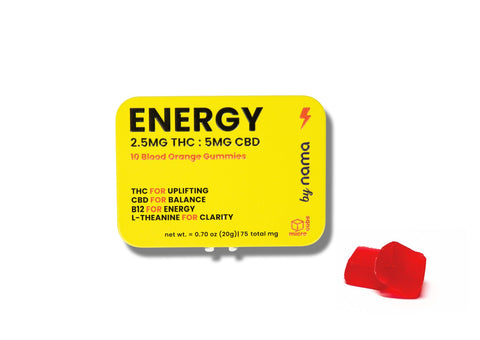
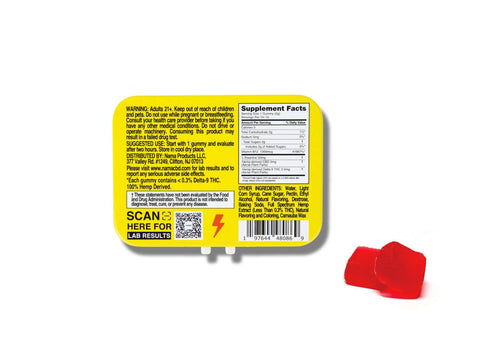
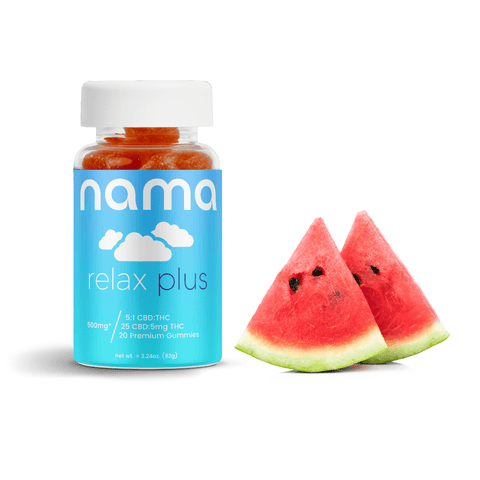
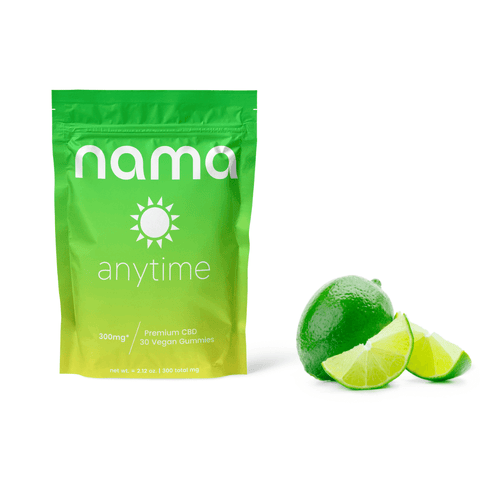
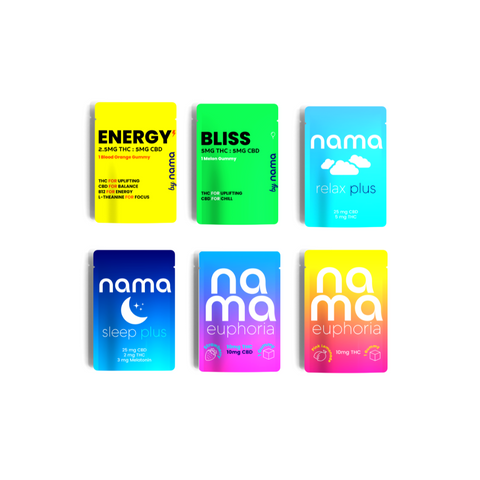
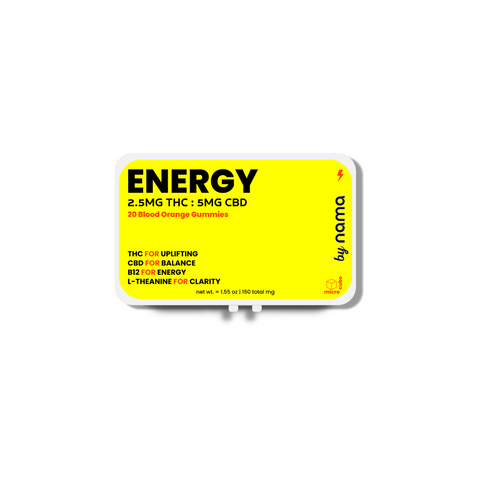

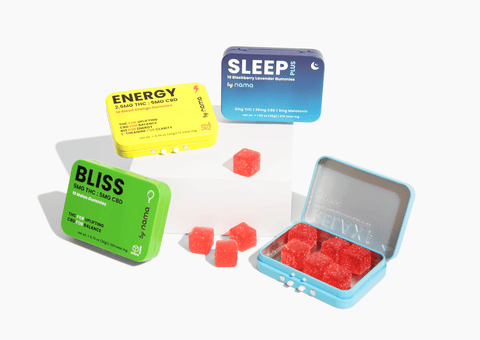
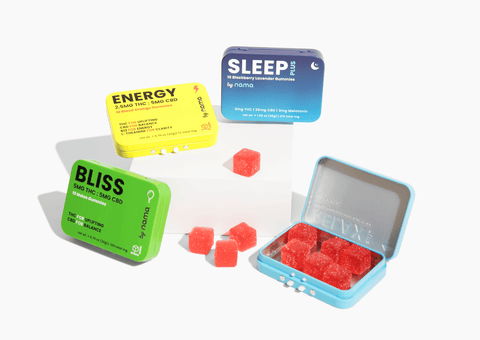
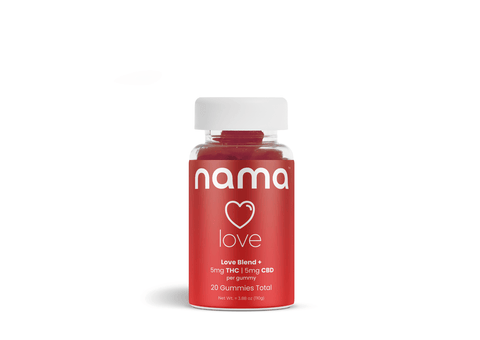

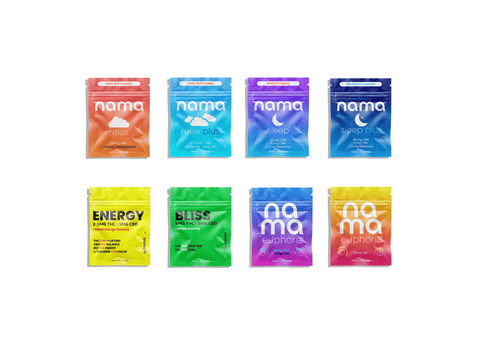
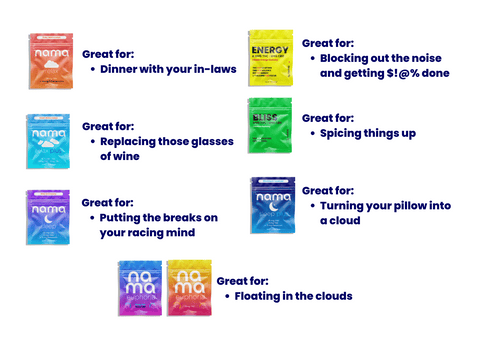
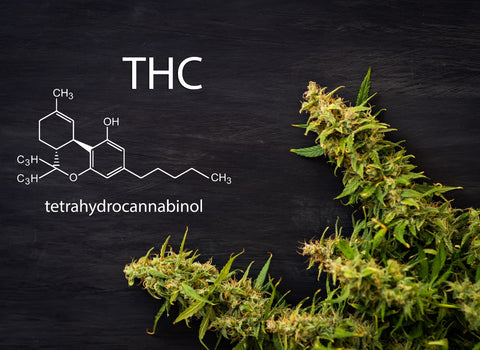
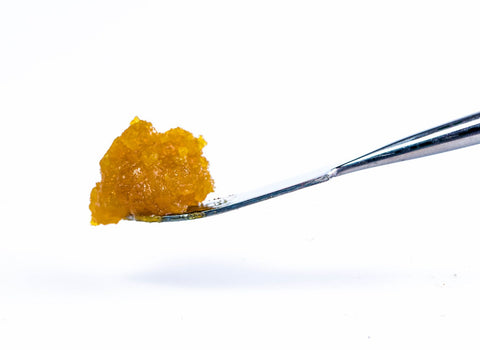

Comments (0)
There are no comments for this article. Be the first one to leave a message!